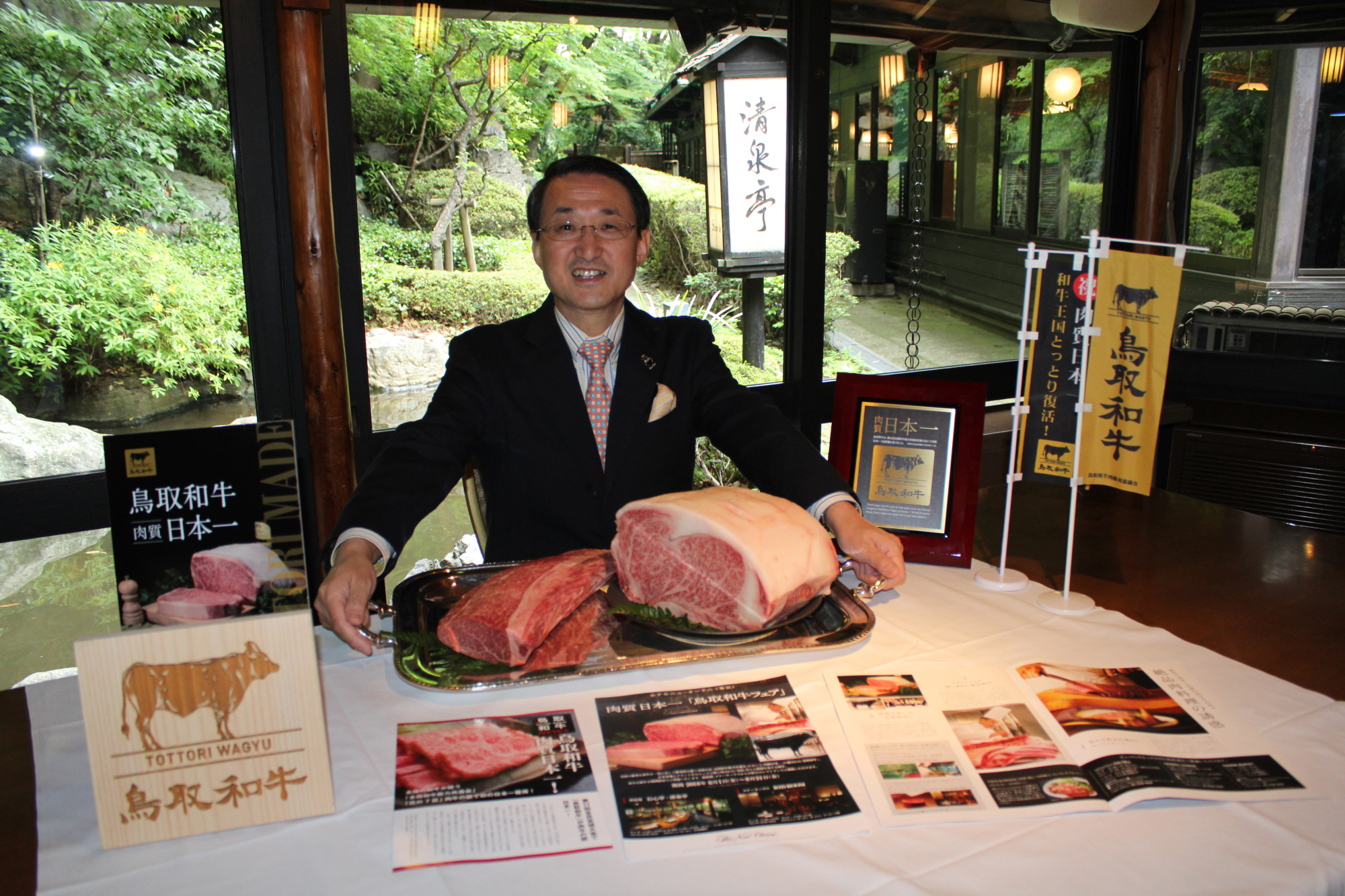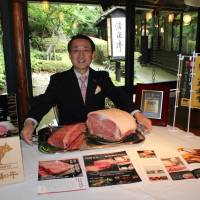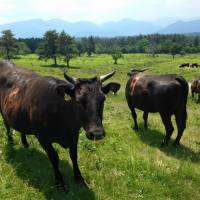Despite being the least populated prefecture in Japan, Tottori boasts a wide variety of unique attractions centered on its rich nature, including crystal waters, old-growth forest, as well as the blessing of the sea.
Thanks to such an unexploited environment, the prefecture in the Chugoku region rightfully deserves more attention both domestically and internationally.
"Tottori has what we'd like to hand down to future generations, namely, abundant beautiful nature and heartfelt bonds among people," Gov. Shinji Hirai said in a recent interview with The Japan Times at the Hotel New Otani Tokyo in Chiyoda Ward.
For some, the Tottori Sand Dunes in front of the Sea of Japan or premium matsubagani snow crab are what might come to mind upon hearing the prefecture's name. Besides its abundant fishery products and famed specialties such as pears, watermelons and Japanese scallions, Tottori is also a producer of top-quality beef, known as Tottori Wagyu.
"Our wagyu won the beef cattle category at last year's National Competitive Exhibition of Wagyu," Hirai said, referring to the event dubbed as the "Wagyu Olympics" that is held every five years.
Actually, this was not the first time that wagyu from Tottori took top honors in the competition. When the inaugural event was held in 1966, wagyu named Ketaka from the prefecture was crowned champion, the governor explained. The original Ketaka line, popular among breeders across the country, has produced more than 9,000 offspring to date.
"So, many wagyu in Japan has had a lineage of Tottori Wagyu," he noted. "Recently, we have wagyu named Hakuho 85-3 and Yurishirakiyo 2, both of which have proved highly popular among breeders."
A Hakuho 85-3 calf fetched a record ¥5.6 million at an auction in April, according to the prefecture.
Historically, Tottori has been the essential part of wagyu's history, as the prefecture has contributed to its development over the years.
Tottori residents' ties with the animals go back to olden times when they treated them as work cattle for iron making and agriculture. When eating beef gradually became more common, people in Tottori dedicated their efforts toward nurturing the "best cattle," Hirai said.
"In 1920, the first registration system for wagyu in Japan was established in the prefecture," he said. "Cattle births started to be recorded and blanket testing was initiated on aspects such as physical shape."
Based on these pieces of data, relevant parties have committed to breeding good cattle, leading to the development of better wagyu.
"Those efforts, originated in Tottori Prefecture, led to producing premium quality wagyu in the world today," he pointed out.
One unique feature of Tottori Wagyu is its high oleic acid content, Hirai continued. With a melting point of 16 degrees Celsius, the acid is easier to be melted in the human body.
"It's as if the fat melts on one's tongue, so it won't settle in the stomach," he said.
Despite its premium quality, Tottori Wagyu might still be less familiar compared to other brands, due in part to its small numbers in the marketplace. Tottori Wagyu accounts for a mere 0.6 percent of all wagyu.
To boost its number to meet increasing demand, the prefecture and farmers have made efforts toward that end. Large cattle barns are now under construction featuring the latest technologies, Hirai said.
The prefectural government is also spending ¥500 million to establish an institute by the end of the 2018 fiscal year that works on genomic analysis to scientifically produce better wagyu, according to the governor.
"The launch of this base would surely accelerate the speed of improving the quality of wagyu, which used to take more time in conventional studies," Hirai noted.
Furthermore, last year's achievement at the Wagyu Olympics has helped boost Tottori Wagyu's profile. The news of a surprising ¥292,929 bento featuring 4.5 kilograms of Tottori Wagyu announced in November has grabbed attention, while the famous high-end Isetan department store in Tokyo's Shinjuku Ward sold the beef in October.
At the Hotel New Otani Tokyo, a Tottori Wagyu Fair is underway through Aug. 31, in which customers are served the premium beef as teppanyaki (iron grill cooking) or steak at three restaurants: Sekishin-tei, Seisen-tei and Rib Room.
"I'm sure the Hotel New Otani Tokyo will further raise its profile as a first-class hotel with more international guests staying toward the Tokyo Olympic and Paralympic Games," the governor said. "With Tottori Wagyu being served here, I expect global awareness of it will also increase as many more visitors have a chance to taste it."
This series introduces municipalities and local companies promoting the beauty and excellence of deep Japan.





















With your current subscription plan you can comment on stories. However, before writing your first comment, please create a display name in the Profile section of your subscriber account page.